The Daintree: land before time

As we hover high above the Daintree rainforest’s canopy, a dazzling red lacewing butterfly flits into view, a transient beauty, flirting for the camera up here in this astonishing, buzzing world of insects. You could almost forget our surreal position – 40 m aloft, hanging from a huge industrial crane.
The Australian Canopy Crane is a biologist’s dream, giving unparalleled access to life at the top of the trees, so performing a vital role in wet-tropics research. The site manager, ecologist Cassandra Nichols, of James Cook University, is delighted with her role coordinating the work of scientists using the crane.
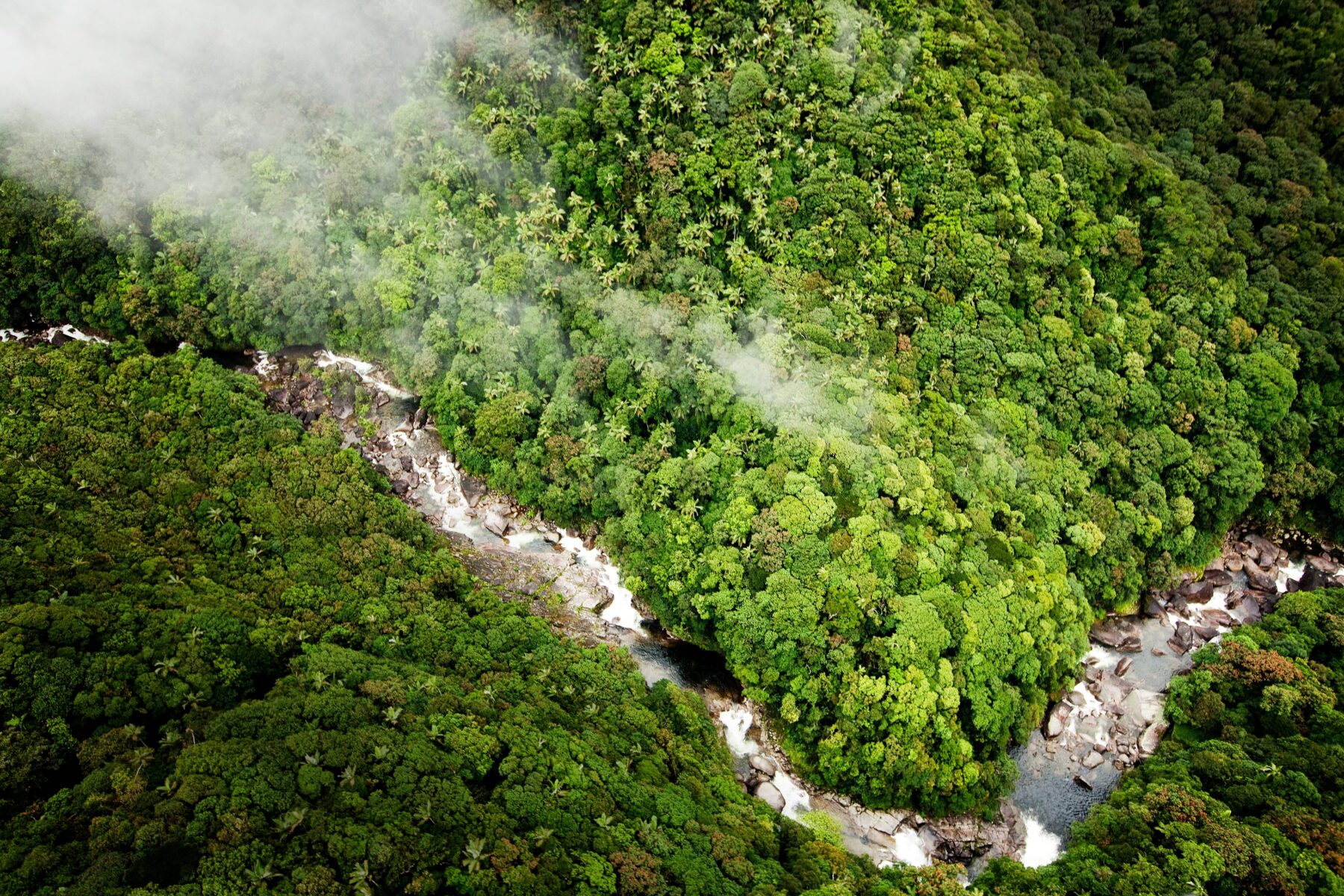
“My office in the sky,” she says, gesturing 360 degrees to encompass several hundred hectares of pristine tropical forest, the placid waters of the Coral Sea, and behind, the dramatic escarpment of the Thornton Range. As we gaze, cloud banks swell and plumes of mist rise languidly above the densely packed rainforest.
The Daintree, with Cape Tribulation at its heart, is a setting for the imagination. It was named for British geologist and photographer Richard Daintree, whose prospecting work in the area in the 1860s helped open up the tropical north. Daintree pioneered the use of photography on his field trips and his work – which can be seen at the National Library of Australia – is a superb record of early settlement in Queensland.
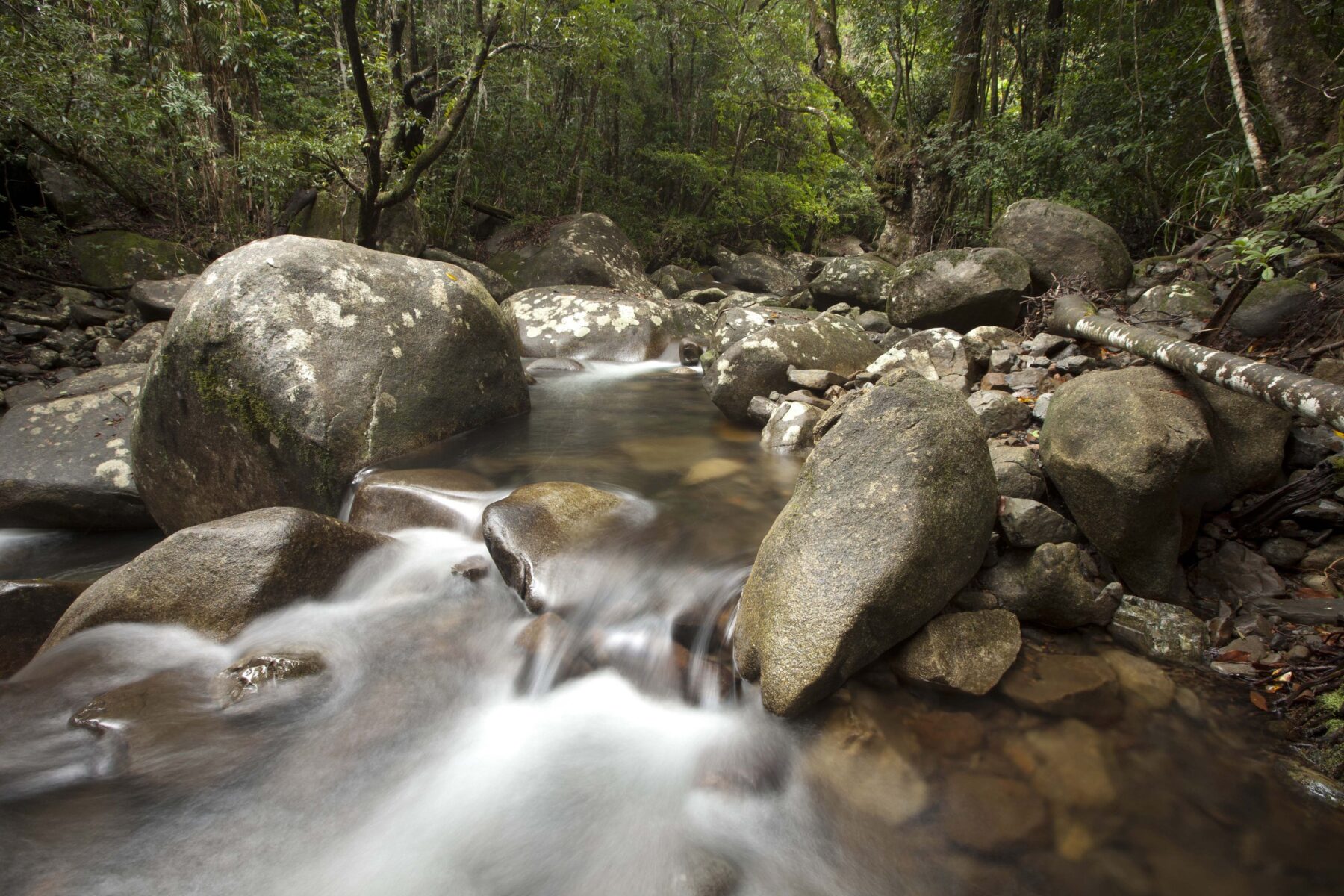
Daintree National Park, comprising the Mossman Gorge (56,500 ha) and Cape Tribulation sections (17,000 ha), begins about 70 km north of Cairns and continues north from the Daintree River to the Bloomfield River, a distance of 70 km. The steep McDowall Range forms the western boundary to the Cape Tribulation section.
In December 1988, in recognition of the region’s extraordinary biological diversity and its prominence as a living record of the evolutionary history of Australia’s plants and animals during the past 400 million years, the Daintree was included in the 8944 sq. km Wet Tropics of Queensland World Heritage Area. And at Cape Tribulation two of Australia’s World Heritage-listed environments came face-to-face: the Wet Tropics’ rainforest and the corals of the Great Barrier Reef.
Density of biodiversity
Lawrence Mason is a third-generation resident of ‘Cape Trib’. His grandfather Andrew Mason came here by boat in 1932 to settle and grow bananas and vegetables, raise cattle and to fish. Then, the wisdom was that tropical soils must be as rich as the vegetation springing from them, a misapprehension that led to untold damage in the world’s tropics.
Mercifully, the Masons only logged their land lightly and today Lawrence’s 170 ha block, known as ‘Mason’s’, is preserved for walking tours, which he leads. These waters take in areas that were once logged and are now regenerating, as well as untouched parts higher on the property.
Lawrence is immensely knowledgeable about the abundant and complex life that thrives here. We begin our walk beside the ribbonwood or ‘idiot fruit’ tree.
“You’re looking at an ancient plant, one that was thought to be extinct until only a few decades ago,” says Lawrence, who goes on to explain that the ribbonwood is the only member of the genus Idiospermum, considered to be the most primitive genus of flowering plants, at about 130 million years old. But what or who was idiotic?
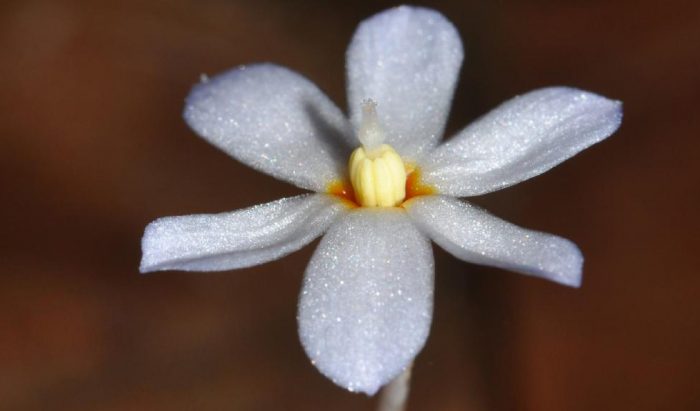
When botanists, who had only known the plant from fossils, discovered it in 1972 (the seeds were found in the stomachs of dead cattle, poisoned by eating the plant, near Cape Tribulation), locals took the “idio” part of its scientific name to mean “idiot”, rather than “peculiar”, and so the tree acquired its common name. But now there’s an understanding in this part of Queensland that, as Lawrence puts it, “the environment is everything, and there’s more money, long term, in ecotourism on this block than logging it”.
Other plants have names that are more accurately descriptive: wait-a-while palm (also known as ‘lawyer vine’), fire vine, walking-stick palm, fan palm, strangler fig, stinging tree, Noah’s walnut. Lawrence stops frequently to gather and show fruits and nuts, as well as pointing out the ferns, vines, cycads and lichens, all illustrative of the bewildering diversity of plant life here.
“See this,” he says, picking up a couple of bright blue fruits. “It’s the blue quandong. Cassowaries like it and our successful regeneration of a cleared area down on the flat began with the planting of a few of these trees. Cassowaries did the rest, consuming quandongs and other fruits, and then excreting the seeds all over the place, so spreading the wealth around. In this way they are absolutely vital to the health of the whole forest.”
“Why aren’t there any animals?” asks a visitor from Hong Kong, who had been expecting a more conventional ‘jungle’. “Well, for starters we have no primates – monkeys or apes,” Lawrence says. “The biggest creature you might see is a cassowary – the females can grow to more than 2 m tall. There are medium-sized marsupials like the tree kangaroo, but generally they stay very still when humans are about so they’re hard to spot up there in the canopy. The different thing about our jungles is that most of the plant eating is done by insects, not animals.”
Daintree: Highway to heaven
A gravel road leads north of Cape Trib for 15 km to Cowie Beach. This is the start of the 4WD Bloomfield Track to Cooktown, some 107 km away. Cowie seems more remote than it is; at low tide the sea drifts sluggishly beyond an expansive beach where clumps of mangroves with their grotesque roots are on show. A south-east breeze rises and falls. From the shoreline looking west, you see clusters of coconut palms and then forest to the mountains. Neither the road nor any settlement is visible.
The construction of this road began in December 1983 and saw major confrontations between local and State authorities and conservationists. The controversy was over a 27-km stretch between Cape Trib and the Bloomfield River through the then Cape Tribulation National Park, which had been declared only in 1981. Environmental activists fastened themselves to trees or, quixotically, joined the trees by planting themselves in the earth. Less than a year after the historic Franklin River blockade in Tasmania ended, Cape Tribulation captured Australia as the environmental issue of the day.
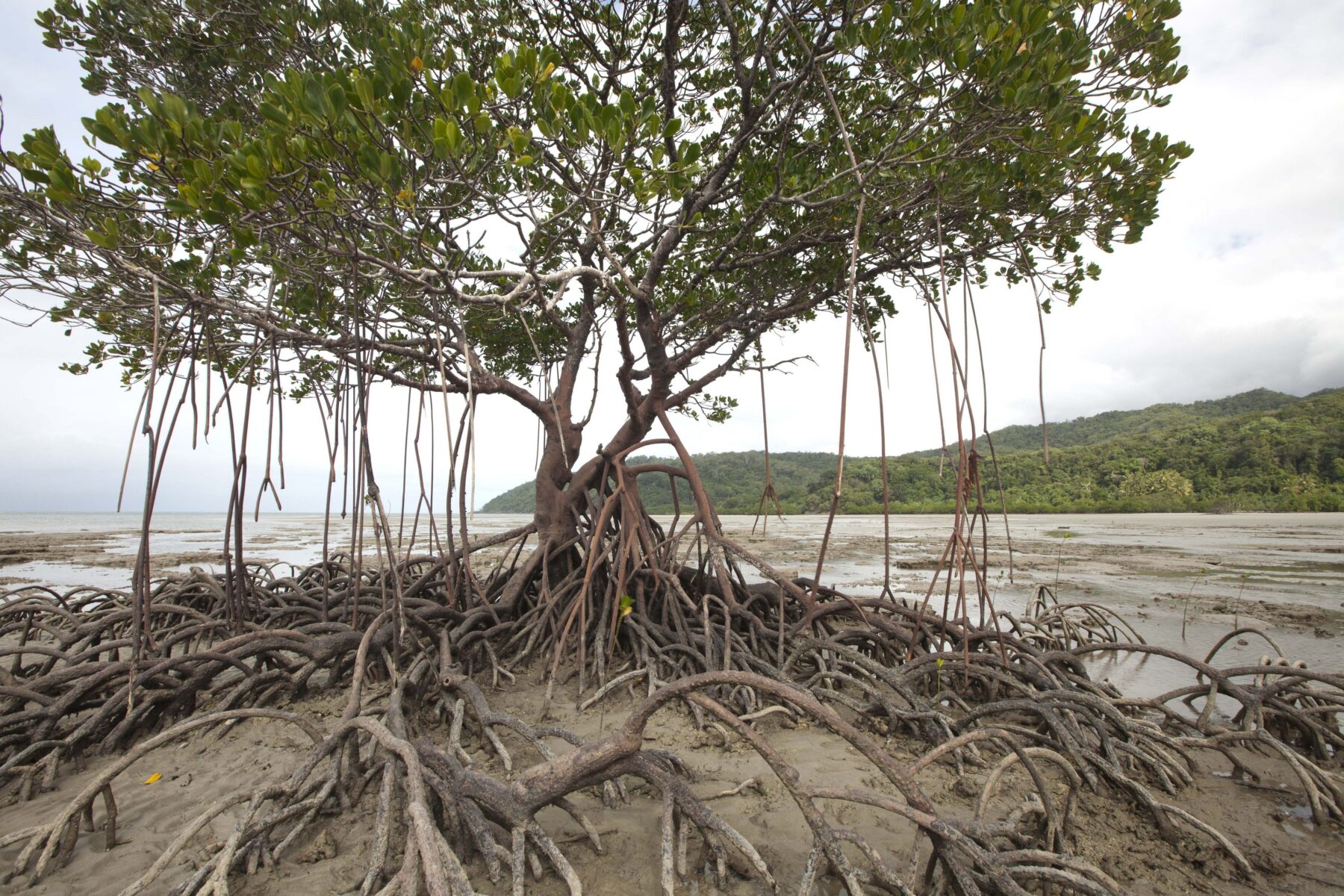
Mike Berwick, later a mayor of Douglas Shire, was a protest leader. “At the start there were a couple of hundred of us, mainly locals, but by the second year we had more than 1000 from all over,” says Mike, who was arrested, along with many others. “We knew we had put the issue on the national radar. We had a yacht offshore set up as a radio station and were able to broadcast to the nation from the tree tops. While we lost, the attention we gained was instrumental in saving the whole area.”
Despite resistance, expert opinion and the ravages of the wet season, the road was completed and opened in October 1984 by Martin Tenni, then Queensland minister for the environment and the local member for Barron River. Martin remains resolute: “The road is the best thing I did in 21 years in government. I had a responsibility for my constituents living north of the Daintree, while the 27 km were the missing link from Melbourne to Cooktown… And you know what? The greenie idiots were the first to use it, including the [federal] Labor member for Leichhardt [John Gayler].” Mike has no doubt about the anti-road campaign’s long-term effect. “Bob Hawke said that if Labor won the 1983 federal election they would move to list the Daintree as a World Heritage site.” Labor won and the preservation of the Wet Tropics of Queensland followed.
The Daintree a biologist’s paradise
About 45 km south-west of Cape Tribulation, the Daintree River rises on the western ridges of the coastal ranges and idles northwards before swinging east in the shadows of the McDowall Range and then rushing south-east to enter the Coral Sea at the southern boundary of the Cape Tribulation section. Its higher reaches are accessible only to experienced bushwalkers.
I travel the lower reaches by boat with Dan Irby, a biologist who for the past 17 years has acquainted people with river life through his business, Mangrove Adventures. We head upriver from the northern terminus of the Daintree River ferry aboard the 6-m Nightwatchman. Originally from Oklahoma, USA, Dan was later a researcher at Melbourne and Monash universities, in Victoria. “I came north to escape the cold,” he explains. Today, in shorts and padded flanno, with an abundant grey beard, he looks very much at home on the Daintree.
“I’ve always been interested in birds so I love being up here, in the tropics and on this special river.” We spot three great-billed herons, flapping rapidly just above the water. “They’re fairly rare,” says Dan, “so seeing three on the one outing is pretty good.” At more than 1m tall, the heron is the largest bird we see. Other species spotted during the boat trip include a couple of azure kingfishers darting through the overhanging vegetation, an orange-footed scrubfowl scratching at its nest mound, a yellow oriole and a welcome swallow – as well as two estuarine crocodiles sunbathing on the sandy banks.
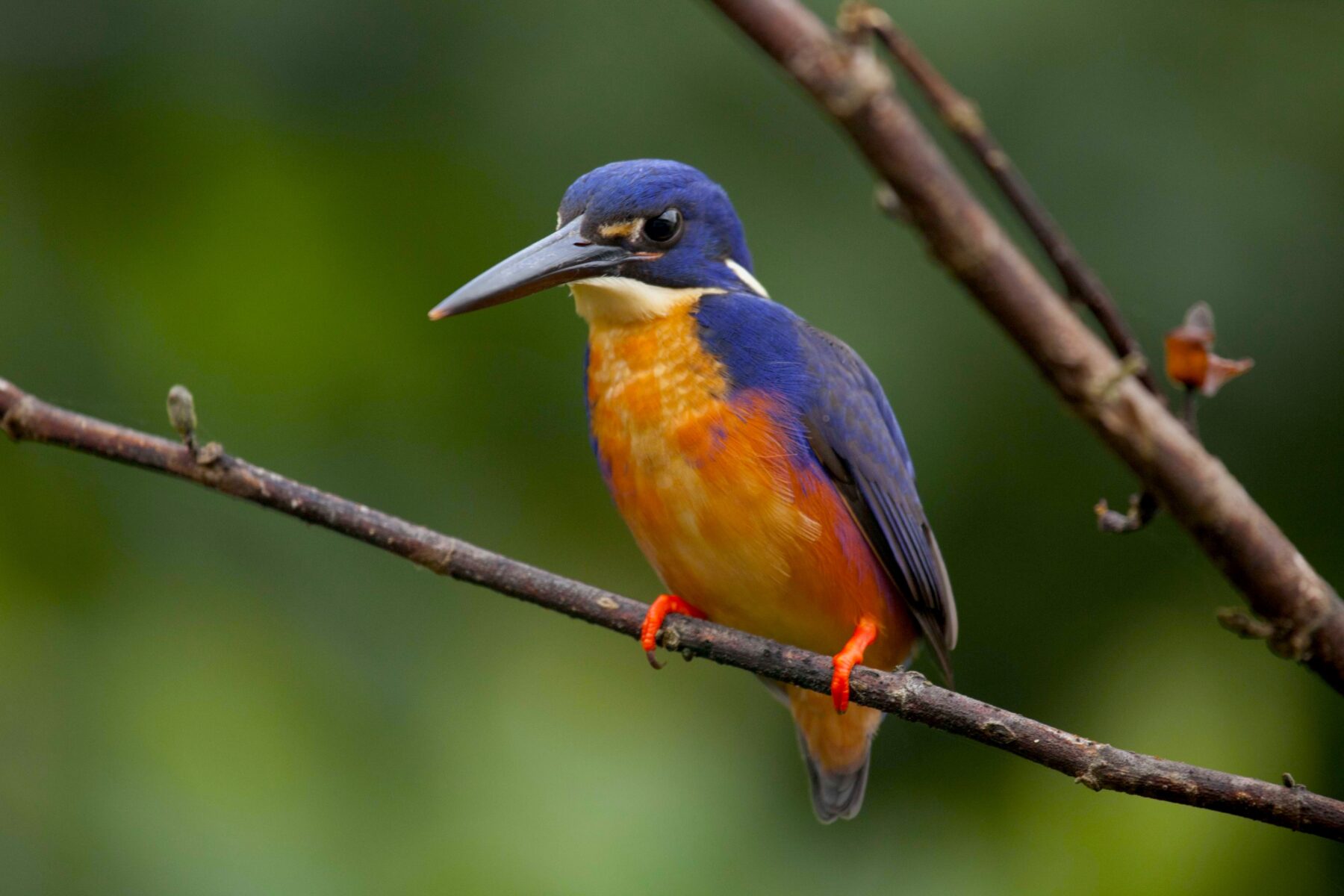
“Is the little fella still there?” Dan calls cryptically to a fellow boatman. A thumbs up, and minutes later the Nightwatchman drifts into a cocoon of mangrove apples where we spot a diminutive blossom bat wrapped in its wings and hanging decoratively beneath the leaves. “Not social like other bats, but important as pollinators,” Dan remarks. “A biologist’s paradise,” he says with a sigh as we move into narrow Barratt Creek, sliding soundlessly over barely drowned thickets of mangrove roots and fallen trees to the tune of intermittent bird song from callers, mostly hidden in the thick foliage above.
“It’s straight out of Joseph Conrad,” I say, thinking of his 1902 novel Heart of Darkness. “Going up that river was like travelling back to the earliest beginnings of the world, when vegetation rioted on the Earth and the big trees were kings. An empty stream, a great silence, an impenetrable forest.”
Dan catches my drift, adding conspiratorially: “That way is civilisation,” waving vaguely over his shoulder towards the popular tourist town of Port Douglas, about an hour’s drive to the south. “Over here is…the other side.”
This is a reason why Dan and other denizens of the northern bank like the river crossing as it is, without a bridge. The Daintree ferry symbolises a frontier. It adds to the faraway mystique of the region for visitors and ensures that the traffic is no more than the road to Cape Tribulation – confined to a narrow, winding coastal strip – can handle.
Indigenous beginning in the Daintree
South of the Daintree River is famed Mossman Gorge, chanelling the Mossman River as it plunges from the Mount Carbine Tableland, past 1330-m Devils Thumb, and towards the sea. Near the entrance to the Mossman Gorge section of Daintree National Park is the Kuku Yalanji Dreamtime centre. The Eastern Kuku Yalanji people are traditional custodians of country stretching 110 km from Cooktown south to Mossman and 100 km inland to the Palmer River. From the 1850s, explorers, fossickers, cedar getters and farmers encroached until, in 1916, groups of the original Daintree inhabitants were settled near Mossman.
Today, the Kuku Yalanji are active participants in ecotourism, as custodians of a wealth of rainforest knowledge and in the management of titled land within the World Heritage Area. The Dreamtime centre houses an art gallery and offers rainforest walks. Kuku Yalanji guide Warren Kerr has been involved since the centre was established in 1987. “We had to ask the elders if we could bring strangers through here, what with the sacred sites,” he explains. “They took their time thinking about it before letting us go ahead.”
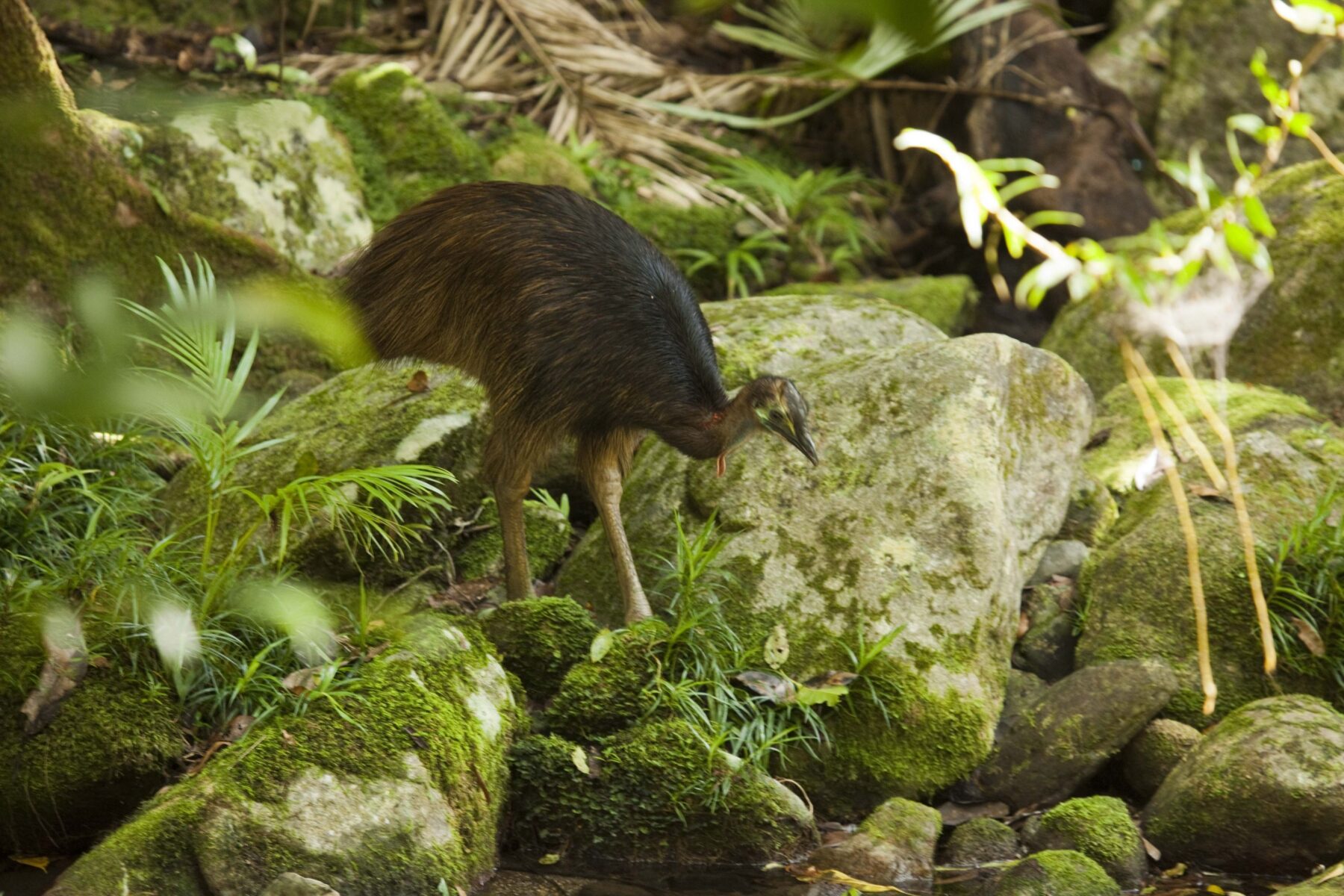
The 90-minute walk is popular with visitors and once we begin, with Warren pointing out things I’d never have noticed, I quickly see why. Among rainforest trees with surprising uses are the sticky bean, whose sap is used to trap birds by gumming up their feathers; the milky pine with sap that drugs freshwater fish; the thorny vines of wait-a-whiles, which, placed across a track, make a simple pig trap; the candlenut tree, which has sap that cures fungal diseases and oily nuts that burn slowly to provide light; and the raspberry-like fruit from the otherwise-to-be-avoided stinging tree. Warren also shows us a “come-and-go hut”; made of rattan stems and bent lawyer-vine canes, the shelter is used during hunting.
“If we’re not feeling well – stuffy nose, sore throat, that sort of thing – we just crush up a green-ant nest, ants and all,” Warren explains, giving us a whiff of some uninviting gunk. The crushed nest serves as an inhalant and soothing rub. “And when we get tired of rump steak and T-bone, we can just come in here to the bush and live easily off the land,” he says, smiling in a satisfied sort of way. The Kuku Yalanji, like other indigenous peoples, a ranger explains later, have hunting rights in national parks, constrained by “understandings” about rare and threatened species such as cassowaries and tree kangaroos.
The unexpected prize on our walk is seeing, at close quarters, a cassowary. The bird, a juvenile more than a metre tall, comes stepping lightly across the creek, just downstream from the secret “ladies’ pool” – which Warren had earlier advised was used for giving birth and is off-limits to men – and approaches without shyness. Attracted by blue and red, it briefly checks out a bag then struts off into the scrub.
It seems fitting that in the company of a traditional owner, I see, for the first time, this legendary flightless bird, a symbol of all that is wondrous and troubling about the Daintree – a region that will forever be prized for its primitive, almost outlandish appearance, its highly specialised ecosystems, its links to ancient biodiversity and its vulnerability. Warren calls “jawun, jawun”, as the bird disappears. “Means ‘friend’,” he says softly.



